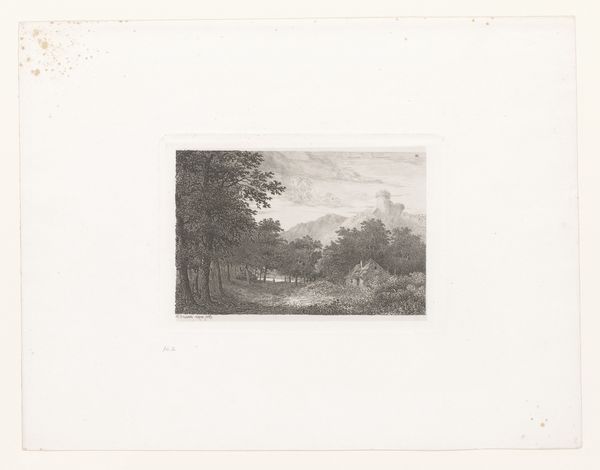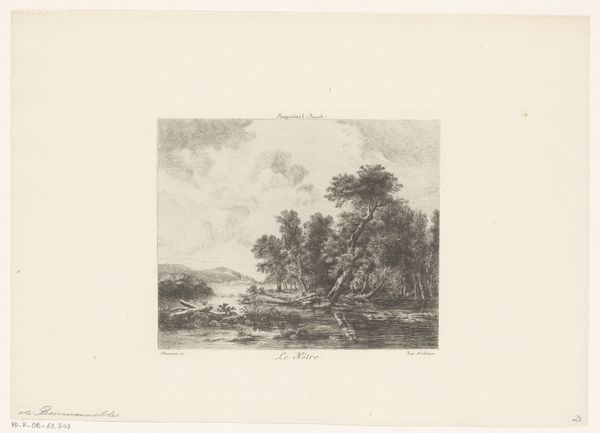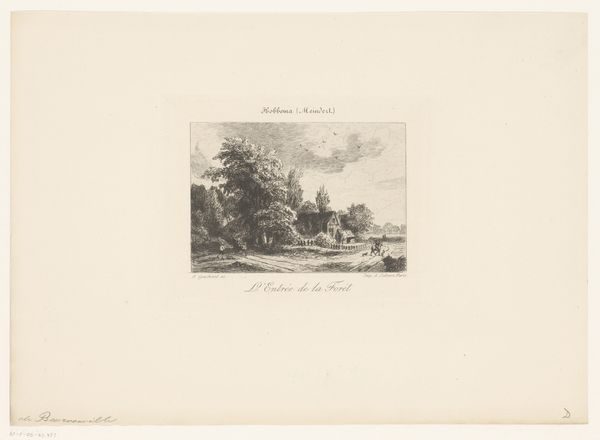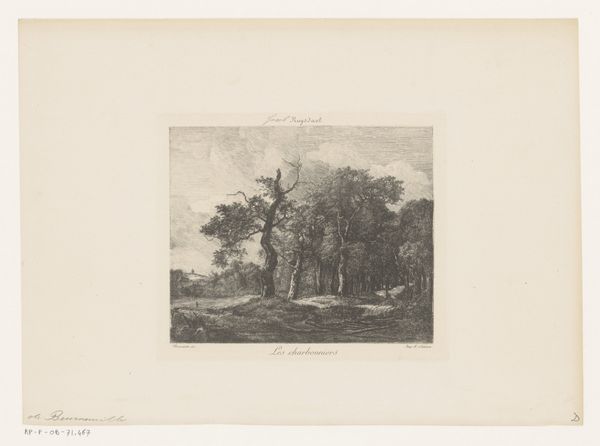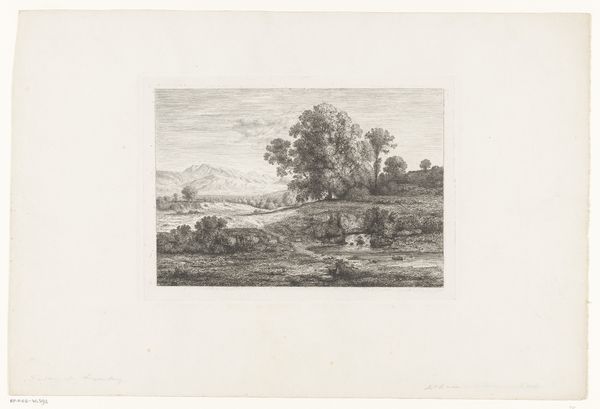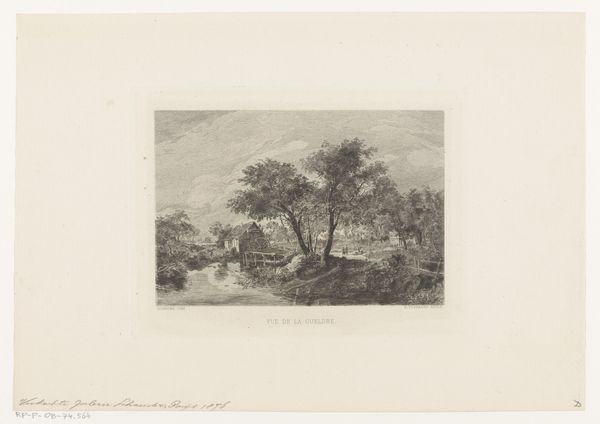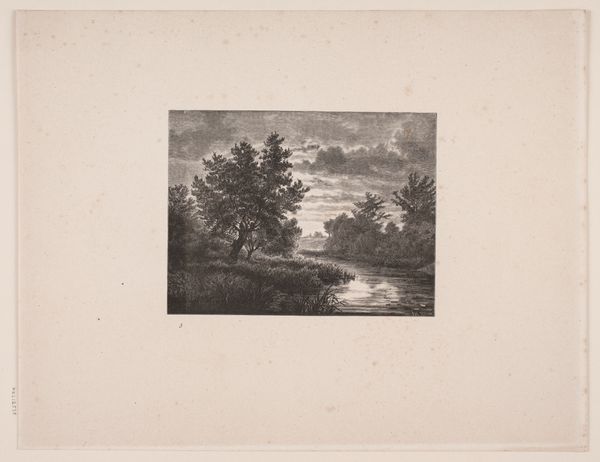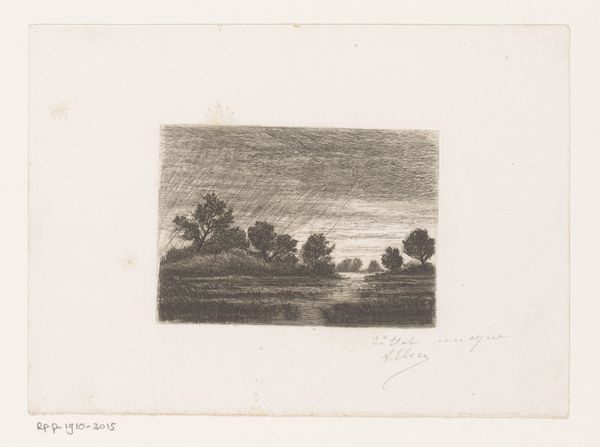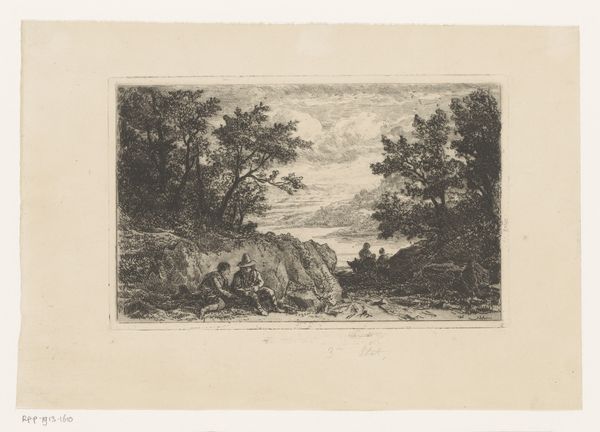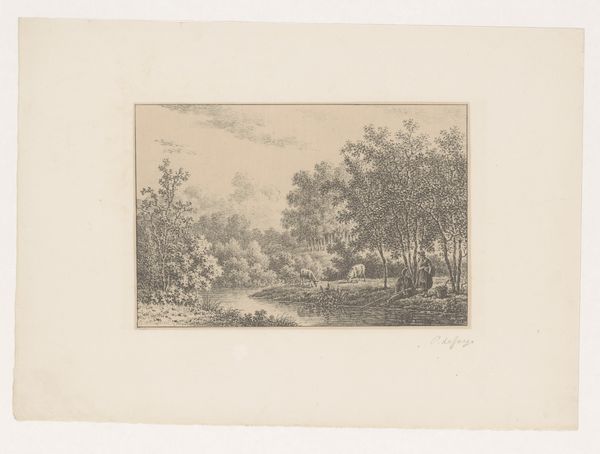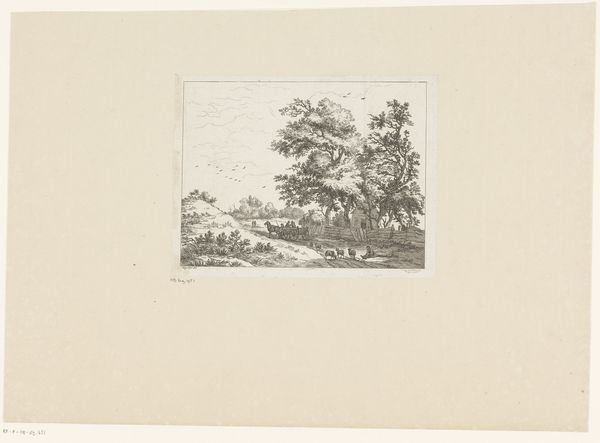
Dimensions: height 283 mm, width 376 mm
Copyright: Rijks Museum: Open Domain
Curator: This is "Landscape with Shepherd and Herd", an etching by Johann Leonhard Raab, created sometime between 1835 and 1899. It evokes a particular atmosphere. Editor: Yes, the tonal range is immediately striking. It feels very balanced between dark and light, creating an air of tranquility, even though it’s a rather small work on paper. Curator: Small, yet it feels vast, doesn’t it? That shepherd with their animals feels dwarfed by the expansive landscape. It pulls on that Romantic idea of the power of nature over humankind. The path the shepherd follows almost disappears in the composition, as though human activity can be absorbed and returned to nothing by the natural order. Editor: That connects to broader 19th-century anxieties and social realities, the demographic shift from rural to urban centers, and a sense of loss linked to agrarian life that surfaces in art. But the presence of the shepherd, rather than an absence of people, points to continuity too. Curator: A continuity represented by the flock, perhaps? The repetition of those forms, the animals all following each other – almost like an ancient frieze motif. It’s also worth looking at the symbolic importance of the animals themselves; they stand as reminders of life's natural cycles. Even within this seemingly realistic scene, those echoes of cyclical natural and cultural references abound. Editor: You’re right, though I can’t help but consider this work within the market forces and display trends of the period too. It’s fascinating to wonder how this print circulated, to whom, and where it would have been exhibited, affecting its overall reception. Curator: Ultimately, despite its grounded realism, it’s not simply a depiction of the natural world, but a reflection on the human place within it. The symbols hint at deeper, almost primordial, connections. Editor: A point well-made. Looking at the larger span of the artist's production and the era, there’s no separating aesthetic visions from the economic conditions that helped shape it all.
Comments
No comments
Be the first to comment and join the conversation on the ultimate creative platform.

